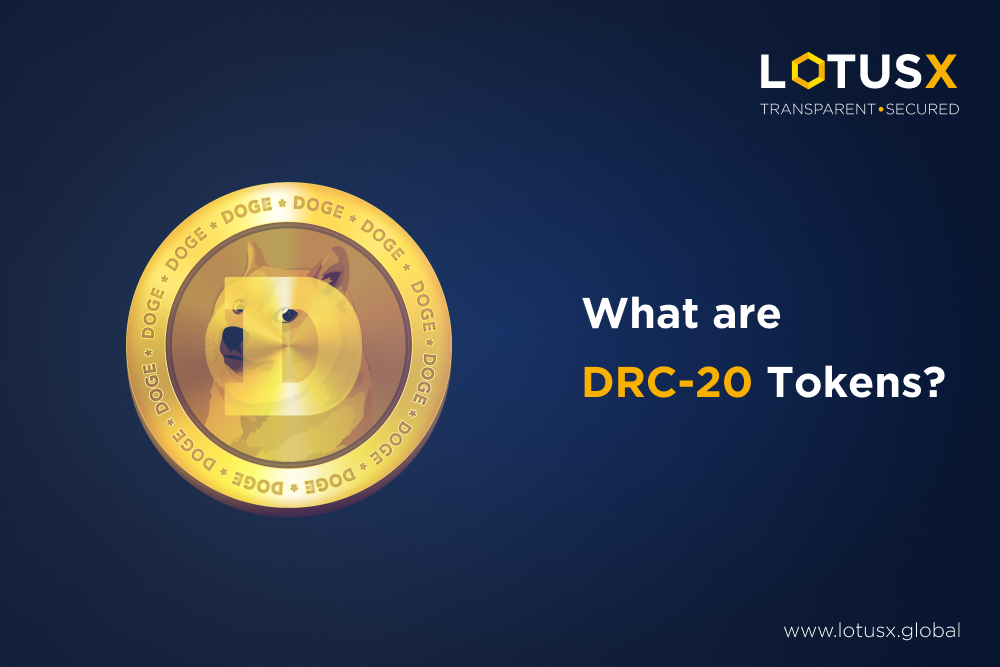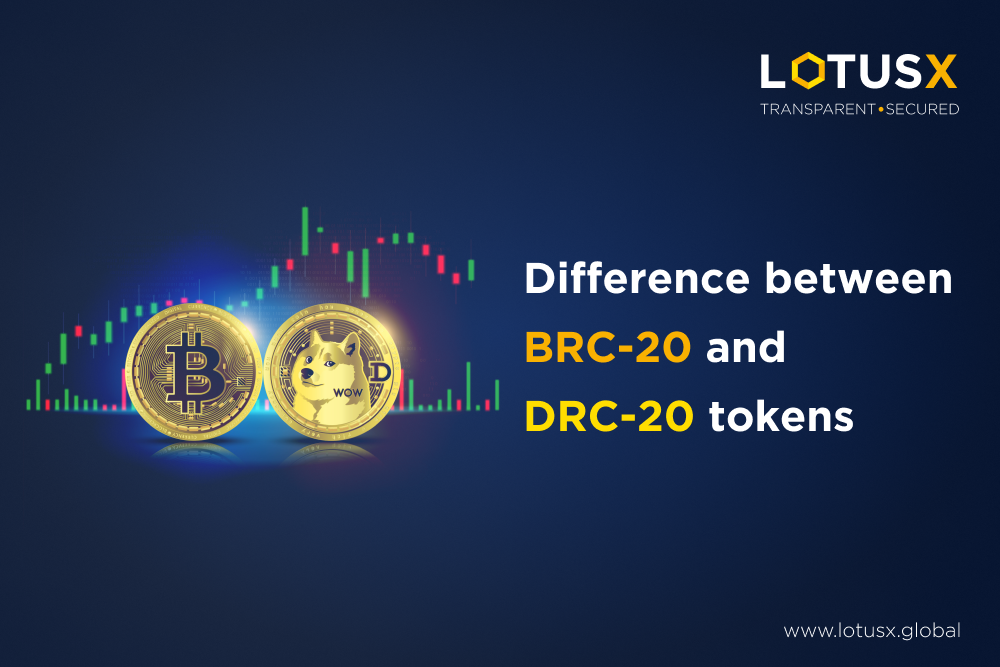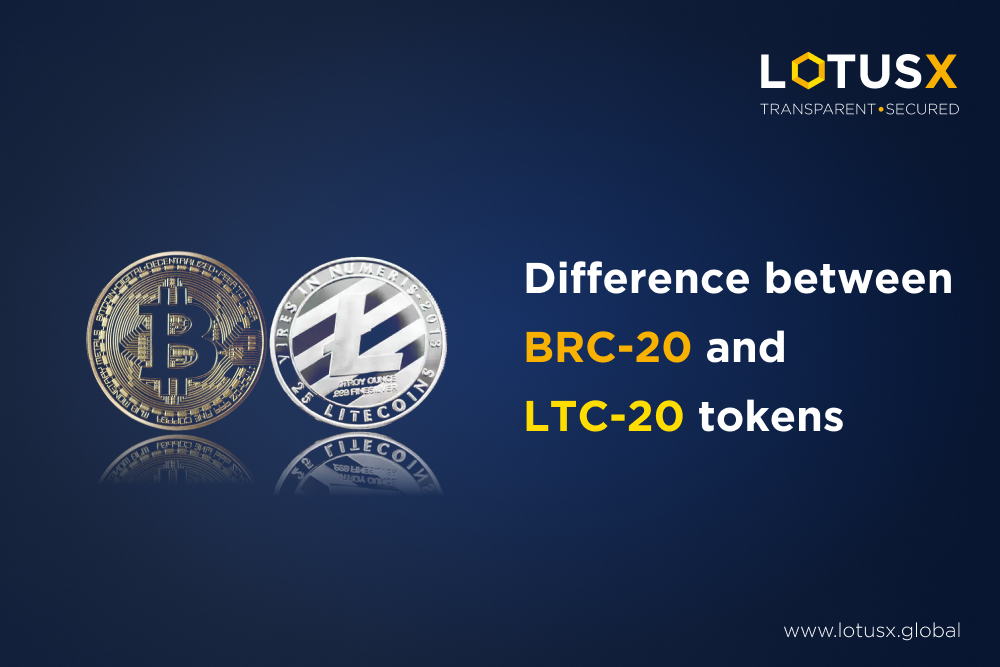The original idea behind DRC-20 and LTC-20 tokens is explained in this article, along with how they are created and why the Dogecoin and Litecoin networks may be the best choice for token inscriptions in the future.
Introduction of DRC-20 and LTC-20 Tokens
Exploring Bitcoin tokens has undoubtedly been a fascinating topic. The tale started with Ordinals, which prepared the way for BRC-20 tokens to spark a significant increase in activity on the Bitcoin network. The creation of LTC-20 and the DRC-20 tokens is intended to bring considerable innovation and growth to the Litecoin and Doge ecosystem, perhaps increasing interest from retail and institutional investors.
Bitcoin’s network congestion and high gas fee contribute to the success of other alternatives, as consumers seek cheaper and faster alternatives that lighten the network and transfer the value.

The DRC20 token standard was introduced by Dogecoin, creating curiosity and concerns about its ability to compete with existing token standards like Bitcoin’s BRC-20 and Litecoin’s LTC20.
Interestingly, recent innovations have followed the same fascinating pattern as introducing cryptocurrencies. When Bitcoin was introduced into the market as a cryptocurrency, Litecoin decided to mint a lighter version of Bitcoin. Simultaneously, Elon Musk created Dogecoin to mock Bitcoin as a joke. The 20’s tokens have walked the same trend trajectory.
What are DRC-20 and LTC-20 Tokens?
DRC-20 tokens were released on May 9 and are very close to BRC-20 tokens. They are almost the same. Like the BRC-20, the necessary information is written into minor DOGE units that cannot be split. Instead of Satoshis, these units are called Elons in Dogecoin.
The DRC-20 whitepaper doesn’t hide the fact that the tokens are an experiment, just like Bitcoin’s BRC-20 coins. Think of DRC-20 as a fun way to find out what the future of Dogecoin will be like. Like a Shiba Inu following its tail, we’re going around the idea that off-chain balance states, inspired by BRC-20, could give the Dogecoin network a new era of fungibility.
This is important to remember because experimenting can lead to very profitable opportunities but also comes with many risks. Most new tokens will be worth nothing in the future.
Even though the infrastructure has yet to be built, minting DRC-20 tokens is more challenging than logging into a website and hitting a few buttons. However, it’s pretty easy if you use cryptocurrency wallets.

The Bitcoin and Dogecoin networks aren’t the only ones with much action on the blockchain. This month, the number of transactions on Litecoin, another proof-of-work blockchain, went from 97 thousand on May 1 to a peak of 583 thousand on May 10. Nearly 560,000 Bitcoin trades occur daily, including BRC-20 and BTC transactions. This is just a little less than the peak of Litecoin on May 10th.
The spike co-incidentally aligned well with the massive jump in new wallet addresses. Interestingly, the Litecoin Foundation reported a whooping 500,000 new Litecoin addresses in a single day. Given this, and the fact that the Litecoin community was talking a lot about LTC-20 around the time that network transactions shot up, it seems likely that the same thing happened on the Litecoin blockchain that occurred on the Dogecoin blockchain: the recent start of the BRC20-like LTC-20 standard.
How do Dogecoin and Litecoin fit into the trend of inscriptions?
Recently, the number of transactions for Dogecoin, one of the longest crypto meme coins, increased significantly. As per market reports, the number of deals went from 40 thousand on May 10, already more than the average for the past year, to a staggering 365 thousand on May 17. That’s a rise of 912 percent in just one week!

The rise is not a result of any news or tweets this time. It is the DRC-20 standard telling crypto enthusiasts to take advantage of this possibly profitable chance in the market right now.
Difference Between BRC-20 and DRC-20
Though the BRC-20 and DRC-20 tokens might have some uncanny similarities, they differ in terms of the following:

- DRC-20 tokens are expected to be more successful due to the difference in transaction fees from the BRC-20 tokens. We all know that the transaction fee on the Bitcoin blockchain is fairly high.
- Crypto enthusiasts have a close eye on DRC-20 tokens as they are likely to handle a load of transactions without increasing their gas fee, unlike BRC-20 tokens.
- DRC-20 tokens are developed on the same protocol as BRC-20. However, Dogecoin standards differ greatly from Bitcoin.
Difference Between BRC-20 and LTC-20
BRC-20 and LTC-20 tokens are fundamentally different.

- LTC-20 tokens are built in the footsteps of ERC-20 tokens by creating NFTs like Litecoin Punks.
- Transaction fee plays a major role in LTC-20’s success too. The high transaction fee on Bitcoin’s network diverted the crypto seekers to look for alternatives and contributed greatly to the success of LTC-20 tokens.
- LTC-20 protocol is created above the Litecoin Ordinals protocol with a net supply of 84 million. However, BRC-20 is a token protocol allowing users to mint tokens using the ordinal protocol over the Bitcoin network.
Bottom Line
The future of DRC-20 and LTC-20 is unknown as they are running their infancy. Hence, we recommend not considering this blog as investment advice and performing your due diligence at all times.




